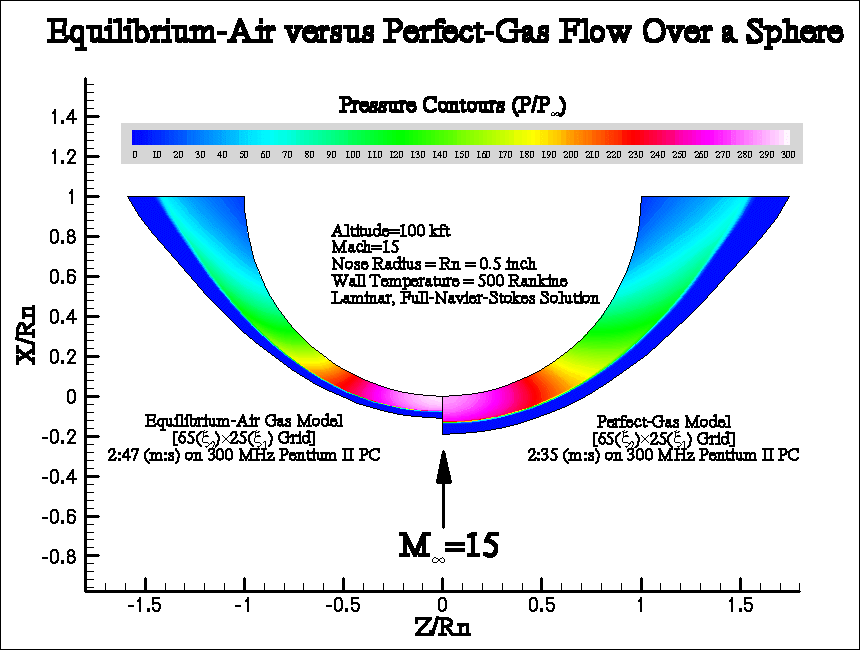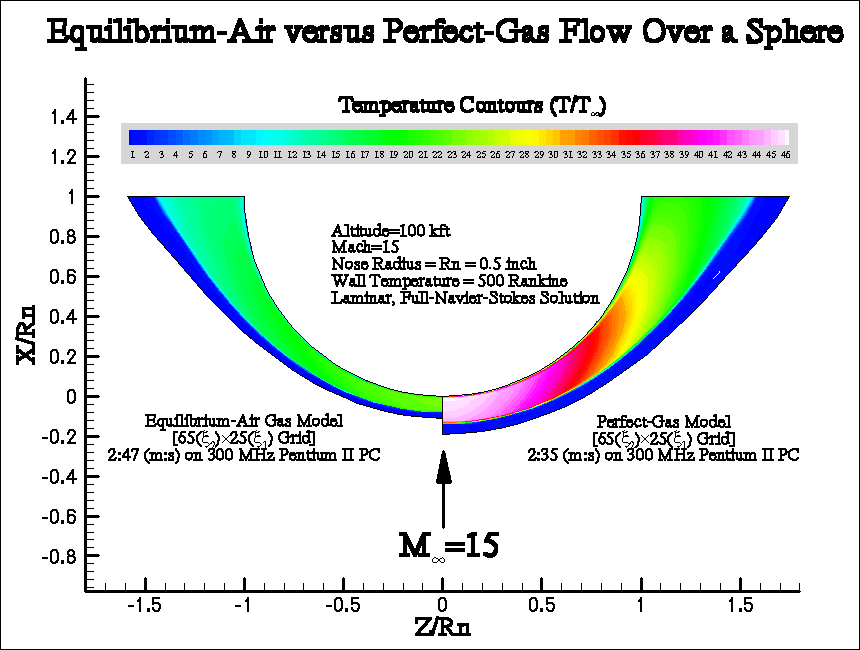Perfect-gas and equilibrium-air reentry over a sphere at Mach 15 at an altitude of 100 kft. The radius of the sphere was 0.5 inch, and wall temperature was assumed to be 500 R. Only laminar flow conditions were considered.
Computational Grid: Computational grid used consisted of 65 body-normal grid points and 25 streamwise grid points for the blunt-body FNS (Full Navier-Stokes) solution. At the wall, very fine grid spacing was used, resulting in a grid spacing at the stagnation point of 4.7×10-8 inch.
PC Hardware Used: Computations were done on a very old 300 MHz Intel Pentium II PC, with 9 GB hard disk and 128 Meg RAM. However, an even older 133 MHz Pentium PC with 1GB hard disk and 32 Meg RAM would also have been sufficient for these computations.
Computational Time Required: These blunt-body FNS numerical predictions was done in a single step, starting from freestream initial conditions. The perfect-gas prediction took 337 iterations to converge, and required approximately 2 min and 34 seconds on a 300 MHz Pentium II PC. The equilibrium-air prediction took 334 iterations to converge, and required approximately 2 min and 47 seconds on the same 300 MHz Pentium II PC. The expected computing times for these computations on a 133 MHz Pentium PC should be around 8 min.
Snapshots of Predicted Flowfield:
(a) Predicted pressure contours using an equilibrium-air gas model are compared with corresponding predictions of a perfect-gas model. Note the considerably thinner shock layer predicted with the equilibrium-air gas model.

(b) Predicted temperature contours using an equilibrium-air gas model are compared with corresponding predictions of a perfect-gas model. Note the considerably cooler shock layer predicted with the equilibrium-air gas model.

